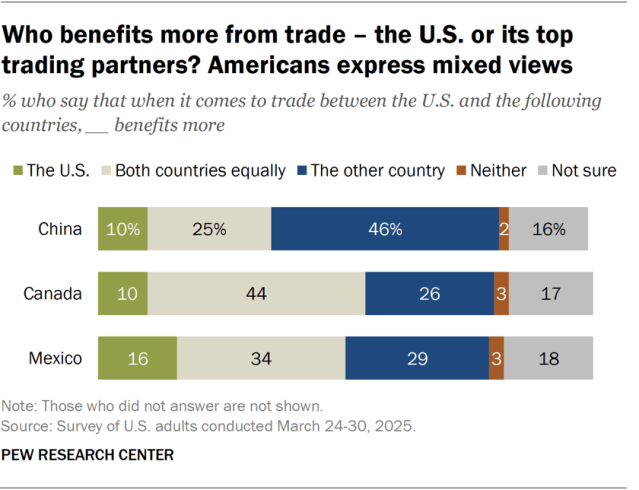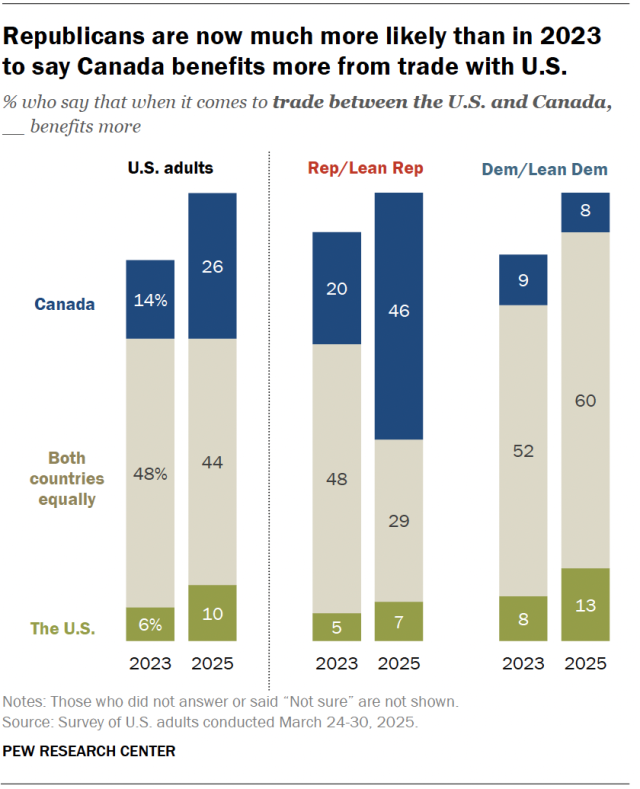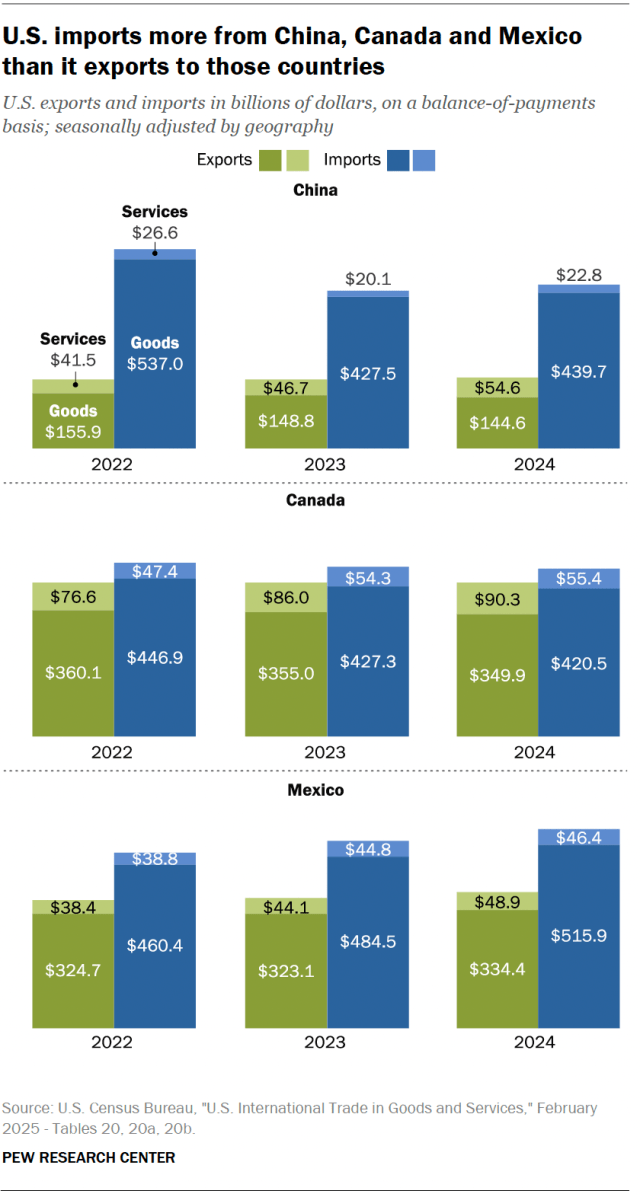
Americans offer mixed views when asked whether trade between the United States and its top three international trading partners – China, Canada and Mexico – does more to benefit the U.S. or the other countries, according to a new Pew Research Center survey.
The survey of 3,605 U.S. adults, conducted March 24-30, comes as President Donald Trump imposes higher tariffs on imports from all three countries. It was fielded before Trump’s April 2 announcement detailing sweeping new tariffs on China and other nations.

Americans are most skeptical about U.S. trade with China: 10% say it benefits the U.S. more than China, while 46% take the opposite view. A quarter say the U.S. and China benefit equally from their trade relationship.
When it comes to trade between the U.S. and Canada, 10% of Americans say it benefits the U.S. more than Canada, while 26% say Canada benefits more than the U.S. The largest share (44%) say the U.S. and Canada benefit equally from their trade relationship.
When asked about trade with Mexico, 16% of Americans say it benefits the U.S. more than Mexico, while 29% say the reverse. Roughly a third (34%) say both countries benefit equally.
For each of the U.S. trading partners asked about in the survey, around one-in-six Americans say they are not sure whether the U.S. or the other country benefits more, or whether both countries benefit equally.
Changing views on U.S.-Canada trade – especially among Republicans
There has been a notable increase since 2023 in the share of Americans who say that trade between the U.S. and Canada benefits Canada more than the U.S. Today, 26% of Americans say this, up from 14% two years ago.

This increase is almost entirely due to changing views among Republicans and Republican-leaning independents.
In 2023, 20% of Republicans said Canada benefits more than the U.S. from their trade relationship. That figure has more than doubled to 46% today. There has been a corresponding 19 percentage point decline in the share of Republicans who say both countries benefit equally (from 48% then to 29% today).
For their part, Democrats and Democratic leaners have become slightly more likely since 2023 to say the U.S. and Canada benefit equally from their trade relationship.
How much trade is there between the U.S. and its top trade partners?
China, Canada and Mexico are the three leading sources of imports into the U.S., as well as the three leading destinations for U.S. exports. That situation that has long complicated attempts to narrow the nation’s overall trade deficit.

In 2024, the three countries together accounted for 36.5% of all U.S. imports and 32.1% of all U.S. exports, according to the Census Bureau’s latest report on international trade. That year, more than $2.5 trillion in goods and services moved between the U.S. and China, Canada and Mexico.
The two largest U.S. trade deficits are with China and Mexico. (A trade deficit means the U.S. imports more from another country than it exports to it. A trade surplus means exports exceed imports.)
In 2024, the U.S. imported $462.5 billion in goods and services from China and exported $199.2 billion, resulting in a $263.3 billion trade deficit. The U.S.-Mexico trade deficit last year was $179.0 billion. The U.S. trade deficit with Canada, while still large at $35.7 billion, was much smaller and well behind several of the nation’s other major trading partners.
Overall, U.S. trade deficits are driven primarily by imports of goods, which include everything from raw materials (steel, oil, lumber) to finished products (cars, TVs, smartphones) to foodstuffs (bananas, fish, wine). The country’s $1.2 trillion trade deficit in goods far outweighs its $295.2 billion trade surplus in services.
Note: Here are the questions used for this analysis, along with responses, and its methodology.

